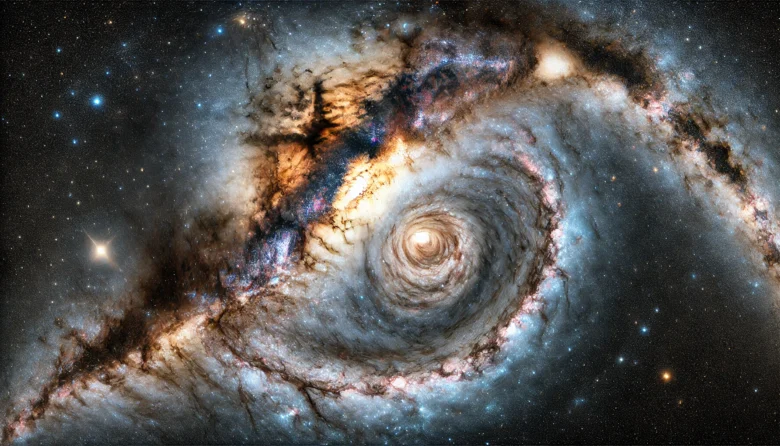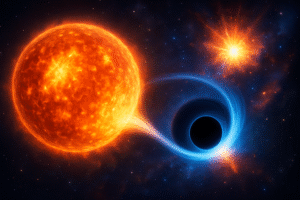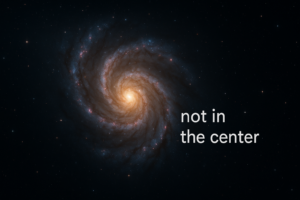When we gaze into the night sky, we’re often captivated by the countless stars twinkling above. But these stars aren’t scattered randomly; they are part of vast, complex structures known as galaxies. Galaxies are the building blocks of the universe, and their formation and evolution are some of the most intriguing topics in modern astronomy. In this blog, we’ll explore the formation and evolution of galaxies, unravelling the mysteries of how these colossal cosmic entities came to be.
The Birth of Galaxies: From Clouds to Stars
The story of galaxy formation begins shortly after the Big Bang, the event that kickstarted the universe around 13.8 billion years ago. In the early universe, space was filled with a nearly uniform distribution of gas, primarily hydrogen (H) and helium (He). Over time, slight variations in the density of this gas led to the formation of small clumps. Due to the force of gravity, these clumps began to attract more gas, growing larger and denser.
As these gas clouds collapsed under their own gravity, they began to spin, forming rotating disks. Within these disks, the gas continued to condense, leading to the birth of the first stars. These stars grouped together to form the earliest galaxies, which were much smaller and less structured than the galaxies we see today.
An example of this early stage in galaxy formation can be seen in the Hubble Deep Field images, which capture some of the oldest and most distant galaxies in the universe. These images give us a glimpse of what galaxies looked like when the universe was only a few hundred million years old.

The Growth and Evolution of Galaxies: Collisions and Mergers
Galaxies didn’t just stay small and isolated; they grew and evolved over billions of years. A major factor in this growth was the process of galaxy collisions and mergers. When two galaxies pass close to each other, their gravitational forces can cause them to interact, pulling stars, gas, and even dark matter (a mysterious substance that makes up most of the mass in galaxies) out of shape. In some cases, these interactions result in the galaxies merging to form a single, larger galaxy.
One of the most famous examples of a galaxy merger is the Antennae Galaxies, located about 45 million light-years away. These two galaxies are in the process of merging, creating a spectacular display of new star formation as their gas clouds collide.
Mergers play a crucial role in the evolution of galaxies, often leading to the formation of elliptical galaxies—spherical or oval-shaped galaxies with little new star formation. In contrast, spiral galaxies like our own Milky Way, which have distinct arms winding out from a central bulge, are typically the result of more gradual growth and less violent interactions.
The Role of Dark Matter in Galaxy Formation
An essential ingredient in galaxy formation is dark matter, which, despite its elusive nature, makes up about 85% of the total mass in the universe. Unlike normal matter, dark matter does not interact with light, making it invisible to telescopes. However, its gravitational influence is crucial in the formation and structure of galaxies.
Dark matter forms large halos around galaxies, providing the gravitational pull necessary to hold them together. Without dark matter, the visible parts of galaxies (the stars and gas) would not have enough gravity to remain bound together. In fact, computer simulations of galaxy formation that include dark matter closely match the structures we observe in the universe today.
The study of dark matter and its role in galaxy formation is an ongoing field of research, with many mysteries still to be solved. For instance, scientists are still trying to determine the exact nature of dark matter particles and how they influence the evolution of galaxies over time.
Galactic Life Cycles: Birth, Growth, and Death
Galaxies, like living organisms, go through life cycles. They are born from collapsing gas clouds, grow by accumulating more matter and merging with other galaxies, and eventually, they can enter a phase of decline.
For spiral galaxies, star formation continues as long as there is enough gas to fuel it. Over time, however, the gas supply can run out, and the galaxy may transition into an elliptical galaxy with little or no new star formation. These “retired” galaxies are often populated by older, redder stars, giving them a characteristic reddish colour.
An interesting aspect of galactic evolution is the potential fate of our own Milky Way. In about 4.5 billion years, the Milky Way is expected to collide with its neighbour, the Andromeda Galaxy. This cosmic event will likely result in the formation of a new, larger galaxy, often referred to as “Milkomeda” or “Milkdromeda.” While the collision will be a dramatic event, the vast distances between stars mean that our solar system is unlikely to be directly affected.
Galaxies and the Larger Universe: Clusters, Superclusters, and the Cosmic Web
Galaxies are not alone in the universe; they belong to larger formations known as galaxy clusters, which may include hundreds or even thousands of galaxies. These clusters are themselves part of even larger formations known as superclusters, which are some of the largest structures in the universe.
An interesting feature of the universe’s large-scale structure is the “cosmic web,” a vast network of interconnected filaments of galaxies and dark matter. The cosmic web forms the backbone of the universe, with galaxies residing along these filaments and vast, empty voids between them. Understanding this structure helps astronomers comprehend how galaxies are distributed across the universe and how they have evolved over time.
One of the most famous superclusters is the Virgo Supercluster, of which the Milky Way is a part. Studying these enormous structures provides insights into the formation and evolution of galaxies on the grandest scales.
Conclusion
The formation and evolution of galaxies is a captivating tale of cosmic creation, growth, and transformation. From the humble beginnings of gas clouds in the early universe to the majestic spiral and elliptical galaxies we see today, the life cycle of galaxies is a dynamic process that continues to shape the universe. As we look to the future, we can only imagine the new discoveries that await us as we delve deeper into the mysteries of galaxies and the universe they inhabit. So, next time you look up at the night sky, remember that the galaxies you see are not just collections of stars—they are the ever-changing, evolving giants of the cosmos.
Author’s Note
Thank you for exploring the fascinating world of galaxies with me. I hope this blog has sparked your curiosity about the universe and inspired you to learn more about the incredible processes that shape our cosmic neighbourhood. Keep questioning, keep exploring!
G.C., Ecosociosphere contributor.
References and Further Reading
- NASA’s Galaxy Evolution
- McGaugh, S. (2022). Primer on Galaxy Properties. https://doi.org/10.59350/tkcna-9zf68
- Standard cosmological model. Big Bang. Forming the structure of the universe.. https://astronuclphysics.info/Gravitace5-4.htm





Comments
I do believe all the ideas youve presented for your post They are really convincing and will certainly work Nonetheless the posts are too short for novices May just you please lengthen them a little from subsequent time Thanks for the post
Mat6tube Extremely valuable articles or reviews currently